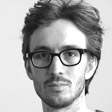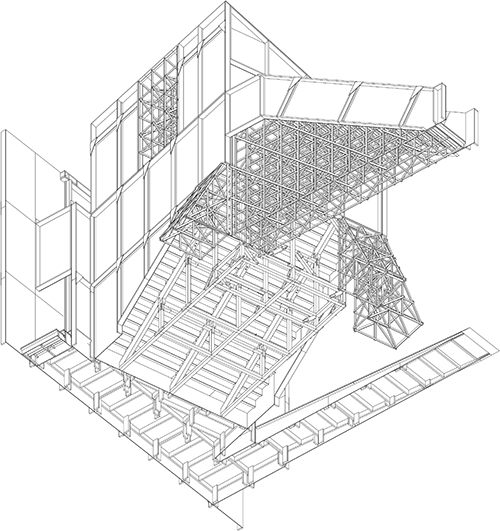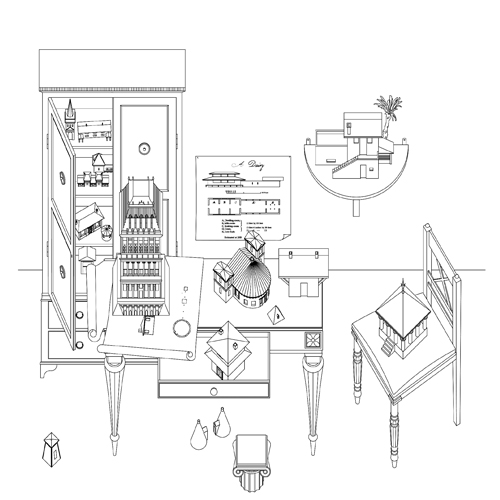
Conférence
Mardi 18 novembre 2014, 18h30
Salle SG0211, EPFL
Dans le cadre de l’exposition “Architecture by Line – Saul Steinberg“
Saul Steinberg’s drawings form a basis for discussing both the role of drawing in architecture and perhaps even the role of the architect in society. Nicholas Lobo Brennan’s talk draws a line from Saul Steinberg’s work, via the theoretical drawings of renaissance Europe, to the work of Lina Bo Bardi, Fischli and Weiss, and Richard Wentworth, back to his own architecture practice, GRUPPE. The talk looks at the possibilities of lines being understood not only as drawing but also as walking, observing, and storytelling. By opening up the content of Saul Steinberg’s work in relation to others, the talk will discuss how the approaches embedded in Steinberg’s work could influence architectural production, not in terms of design doctrine, but rather as a critical way of seeing, of asking the right questions before looking for solutions.
Nicholas Lobo Brennan
architecte, Zurich
Nicholas Lobo Brennan is a founding director of GRUPPE, a Zurich based architecture practice established in 2012. He is the joint editor of the architecture magazine Models Ruins Power. He studied architecture at the Royal College of Art and The CASS in London. He has given talks at the Venice Biennale, Delft Berlage, and EPFL amongst other places. He teaches at ETH and is professor at HEAD Geneva and the Gerrit Rietveld Academie Sandburg Institute Amsterdam.
In 2012 his practice won the Swiss Art Award for Architecture; in 2013 they were finalists for the Debut Award at the Lisbon Triennial; in 2014 they exhibited as the Swiss Architecture Museum (SAM) as one of six new directions in Swiss architecture, celebrating of the museum’s 30th anniversary.
He works in close collaboration with other architects, designers and artists on the development each project. His work investigates the idea that the gathering of materials is inseparable from the assembly of people. Thinking through making forms a large part of the work.

